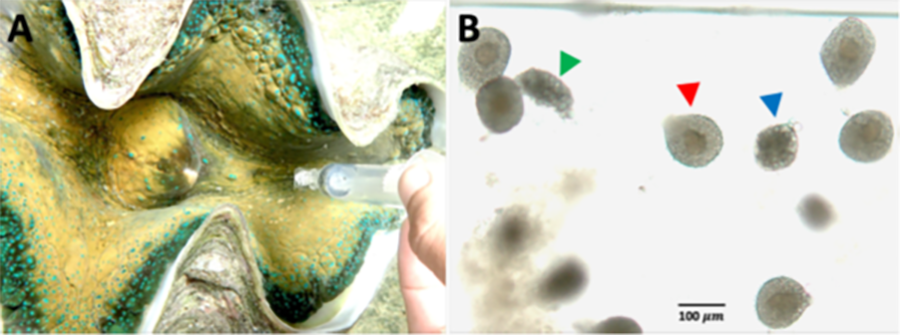Bleaching reduces reproduction in the giant clam Tridacna gigas
Summary
Bleaching or the expulsion of the photosynthetic symbiont Symbiodiniaceae (‘zooxanthellae’) caused by the increase in seawater temperatures causes massive mortalities in giant clams. After a bleaching disturbance, population recovery is heavily dependent on reproduction and recruitment success. However, how bleaching directly affects the reproductive performance of giant clams is, to date, unknown. In our study, we examined the direct impacts of bleaching on the reproduction of the giant clam Tridacna gigas between 2020 and 2021 in the Philippines. A continuous 6 month monitoring of egg concentration, egg stage, egg size, recovery, and survival in prolonged bleached (moderate or severe) and non-bleached hatchery-bred T. gigas maintained in the wild was conducted. The probability of producing eggs and the proportion of intact eggs (developing and mature) were highest in healthy giant clams, followed by moderately bleached giant clams, and lowest in severely bleached giant clams in which >50% individuals had empty gonads. The egg average diameter was similar among giant clams, regardless of degree of bleaching. Only 5 severely bleached giant clams showed partial color recovery, whereas 2 healthy and 12 severely bleached giant clams died. This study shows that apart from the lethal effects of severe bleaching, the re productive processes of surviving bleached T. gigas such as gametogenesis and egg production can be also negatively affected. Results suggest that the increasing frequency and intensity of bleaching due to thermal stress can lower the reproductive potential of giant clams and likely other zooxanthellate organisms, resulting in reduced recruitment and population decline.
Significance
The study shows how thermally-induced bleaching directly affects reproduction in the giant clams. This is important for understanding the resilience of giant clams and for their conservation in a warming ocean.
Photos


Authors:
Sherry Lyn G. Sayco (Graduate School of Engineering and Science, University of the Ryukyus; Marine Science Institute, University of the Philippines)
Patrick C. Cabaitan (Marine Science Institute, University of the Philippines)
Haruko Kurihara (Faculty of Science, University of the Ryukyus)
Read the full article: https://doi.org/10.3354/meps14251
